Table of Contents
Introduction
According to Pet Food Statistics, The pet food sector is a lively industry committed to manufacturing and delivering food for domesticated animals, especially dogs, and cats. It’s presently witnessing expansion, driven by higher pet ownership, an emphasis on pet well-being, and a growing desire for top-quality and specialized pet food choices.
Leading companies in this field encompass Nestlé Purina PetCare, Mars Petcare Inc., Hill’s Pet Nutrition, and Blue Buffalo. To sum up, the pet food industry is adapting to meet evolving consumer preferences and the rising significance of pets in our daily lives.
Editor’s Choice
- The global pet food market revenue will reach 186.10 billion in 2028.
- By 2025, offline channels are projected to hold 94.6% of the market share, while online channels are anticipated to capture 5.4%.
- The trend of increasing production is forecasted to persist, with production volumes of 52.51 billion kilograms in 2024.
- The pet food sales reached a value of USD 133.9 billion in 2023.
- A 93% of respondents prioritize a product they believe their dog or cat will enjoy, emphasizing the importance of palatability.
- Approximately 37% of pet owners are in search of discounts on pet items, while 28% are making use of loyalty programs to accumulate savings.
- A significant portion of pet owners, around 77%, are aware that cats and dogs have different dietary requirements.
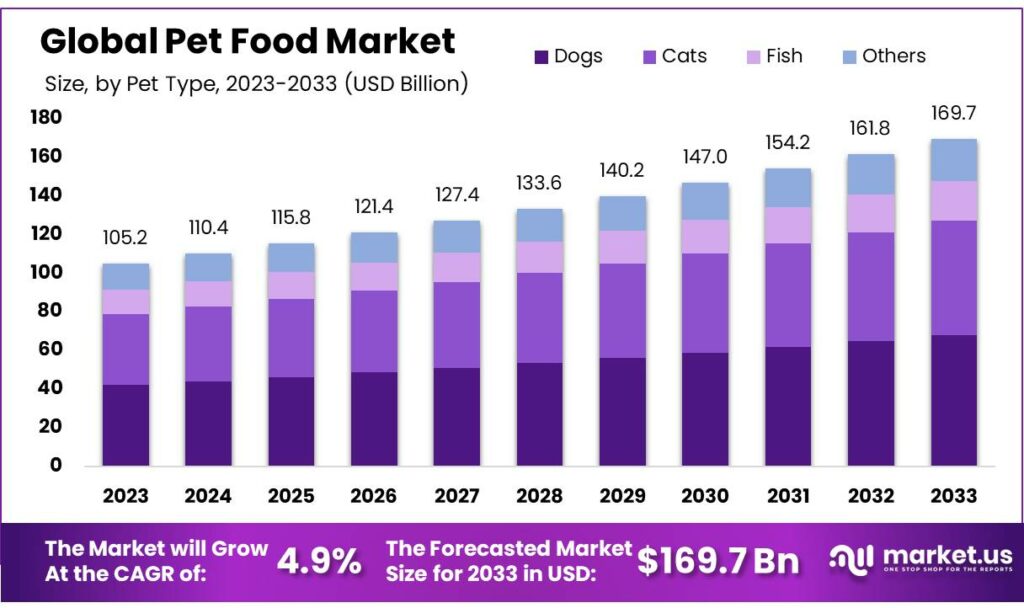
Global Pet Food Market Overview
Global Pet Food Market Size
- The global pet food market has exhibited a remarkable growth trajectory over the past few years at a CAGR of 5.6%.
- In 2018, the market’s revenue stood at USD 88.91 billion, and by the end of 2019, it had increased to USD 98.57 billion.
- This growth is expected to persist, with revenues reaching USD 177.40 billion in 2027 and USD 186.10 billion in 2028.

Pet Food Market Share – By Distribution Channel
- The global pet food market’s distribution channel dynamics have gradually shifted in recent years.
- In 2018, offline distribution channels dominated, accounting for 98.5% of the market share, while online channels held a modest 1.5% share.
- Looking ahead, the trend of online market expansion is expected to continue. By 2025, offline channels are projected to hold 94.6% of the market share, while online channels are anticipated to capture 5.4%.
- In 2026, the divide narrows further, with offline channels at 94.4%, and online channels growing to 5.6%. This shift is expected to reach a critical point in 2027, as offline channels are predicted to account for 94.1%, while online channels are projected to secure 5.9% of the market share.
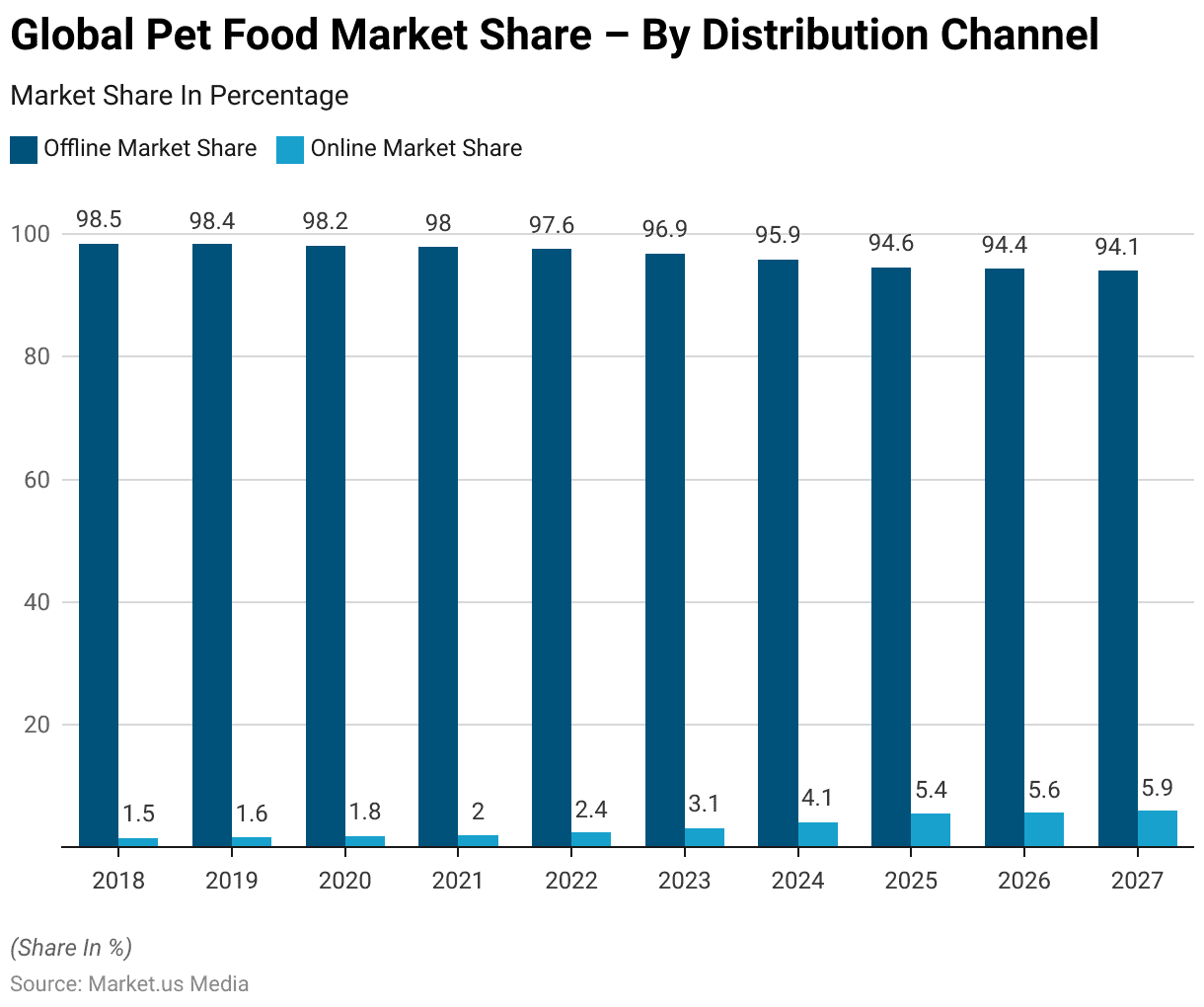
Regional Analysis of the Pet Food Market
North America
- The regional analysis of the pet food market reveals significant variations in revenue across different countries.
- Leading the pack, the United States stands out with a substantial revenue of USD 58,420 million, reflecting its status as a major pet-loving nation.
- In North America, Canada and Mexico contribute USD 3,885 million and USD 2,599 million, respectively, highlighting their growing pet food markets.
Europe
- Moving across the Atlantic, Europe demonstrates its importance in the industry.
- The United Kingdom, with USD 7,465 million, showcases a strong market presence, followed by France with USD 5,124 million, Italy with USD 3,921 million, and Germany with USD 5,863 million.
- Spain, while smaller in comparison, still contributes a notable USD 2,126 million to the regional market.
Asia Pacific
- In the Asia-Pacific region, China emerges as a key player with USD 8,203 million in pet food revenue, underscoring the expanding pet ownership trend.
- India, Japan, South Korea, and Indonesia exhibit varying market sizes, with India at USD 638 million, Japan at USD 4,762 million, South Korea at USD 1,183 million, and Indonesia at USD 2,002 million.
- Australia, in the same region, reports a noteworthy USD 3,062 million in pet food revenue, signifying its substantial presence in the market.
Middle East and Africa
- In the context of the pet food market, several countries in the Middle East and Africa region are making their mark, albeit with varying levels of market revenue.
- South Africa stands out with a revenue of USD 521 million, showcasing a growing pet food industry within the country.
- Egypt, with USD 131 million in revenue, reflects a developing market with potential for expansion. Similarly, Saudi Arabia reports a noteworthy USD 243 million, indicating a significant presence in the region’s pet food sector.
- Meanwhile, the United Arab Emirates (UAE) contributes USD 149 million to the market, highlighting its role in the growing pet food industry in the Middle East.
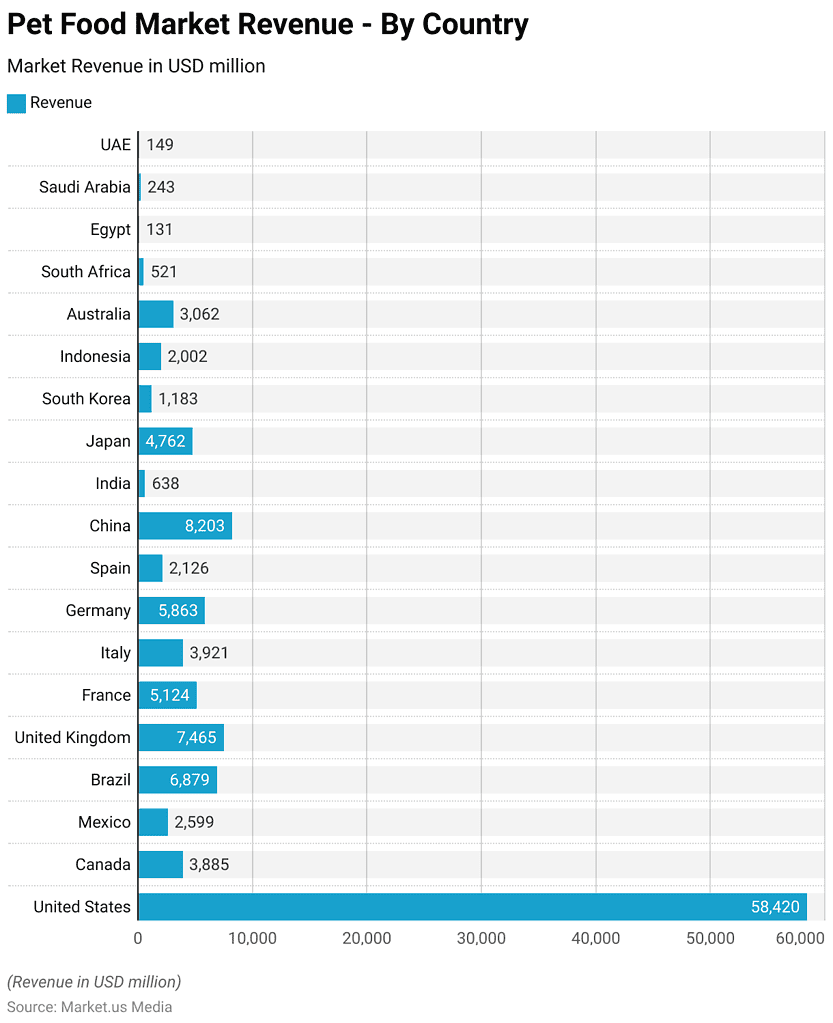
Pet Food Production Statistics
Production Volume
- The global pet food production volume has displayed a consistent upward trajectory in recent years.
- In 2018, the production volume amounted to 41.43 billion kilograms, and this figure steadily increased to 43.61 billion kilograms in 2019.
- The trend of increasing production is forecasted to persist, with production volumes of 52.51 billion kilograms in 2024, 54.22 billion kilograms in 2025, and 55.95 billion kilograms in 2026.
- The upward trajectory continues through the forecast period, with production volumes projected to reach 57.69 billion kilograms in 2027 and 59.47 billion kilograms in 2028.

Average Per Capita Production Volume
- The average production volume of pet food per capita has demonstrated a consistent increase over the years, reflecting the growing demand for pet nutrition and the evolving dietary preferences of pet owners.
- In 2018, the average production volume per capita stood at 5.7 kilograms, and by the end of 2019, it had risen to 5.9 kilograms.
- The forecast for the coming years remains positive, with per capita production projected to reach 6.7 kilograms in 2023, 6.8 kilograms in 2024, and 6.9 kilograms in 2025.
- The trend of increasing per capita production continues, with projected averages of 7.1 kilograms in 2026, 7.3 kilograms in 2027, and 7.4 kilograms in 2028.
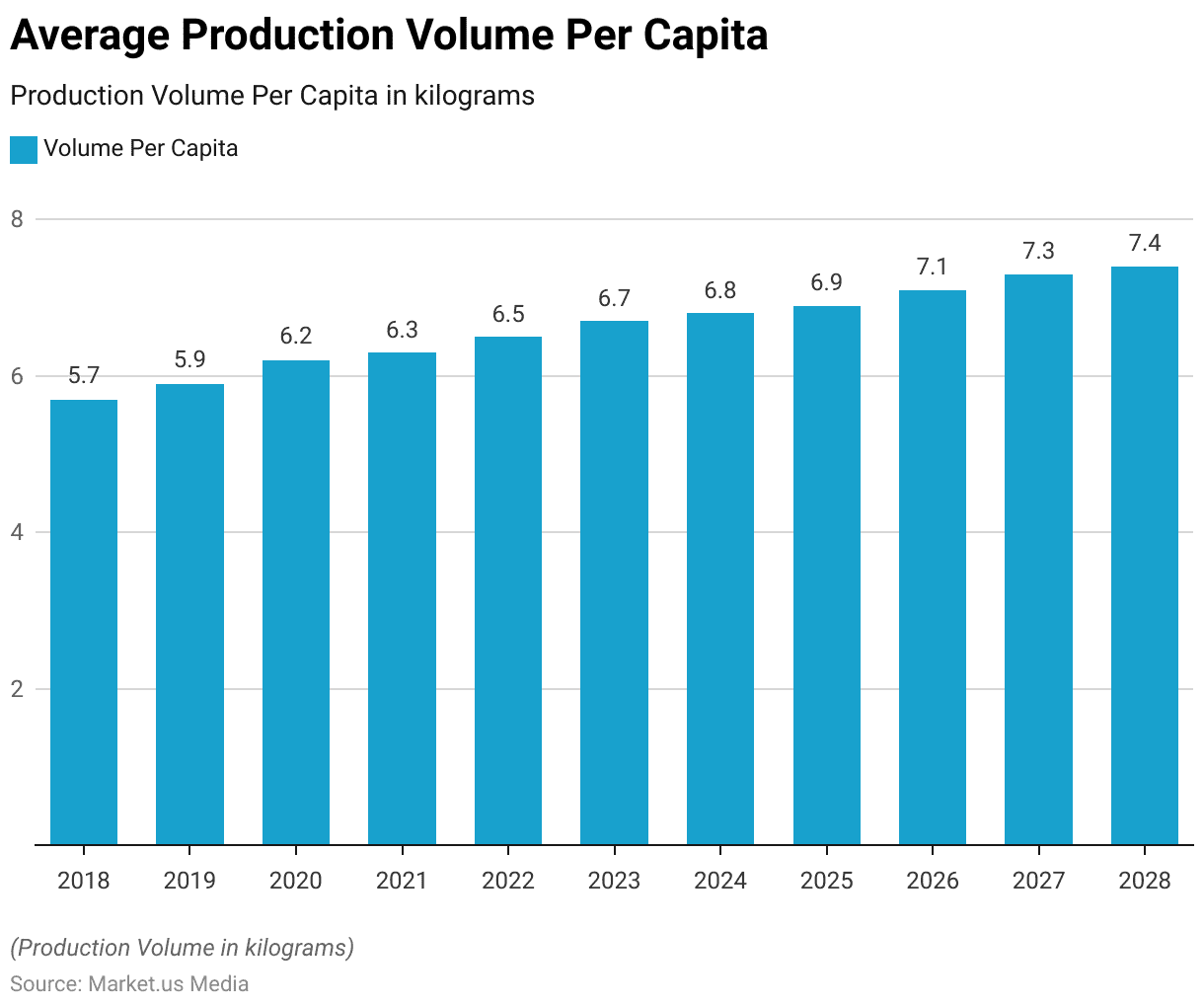
Pet Food Price Statistics
- The price per unit of food, denominated in USD, has exhibited a gradual but consistent upward trend over the years.
- In 2018, the price per unit was recorded at USD 2.15, and this figure steadily increased to USD 2.26 in 2019, reflecting moderate price growth.
- The upward trajectory persists in 2024, with a price of USD 2.85 per unit, and in 2025 when it is anticipated to be USD 2.93.
- As we move into 2026 and beyond, the trend remains positive, with prices projected to reach USD 3.00 in 2026, USD 3.08 in 2027, and USD 3.13 in 2028.

Global Pet Food Sales Statistics
- The pet food industry has witnessed substantial growth in sales over the past decade, reflecting the evolving preferences and priorities of pet owners.
- In 2010, pet food sales amounted to USD 59.3 billion, and this figure steadily increased in the subsequent years.
- This growth continued in 2019, with sales totaling USD 93.9 billion, and further accelerated in 2020, when the industry recorded sales of USD 102.6 billion.
- Looking ahead, the forecast is optimistic, with projected sales of USD 123.6 billion in 2022 and USD 133.9 billion in 2023.
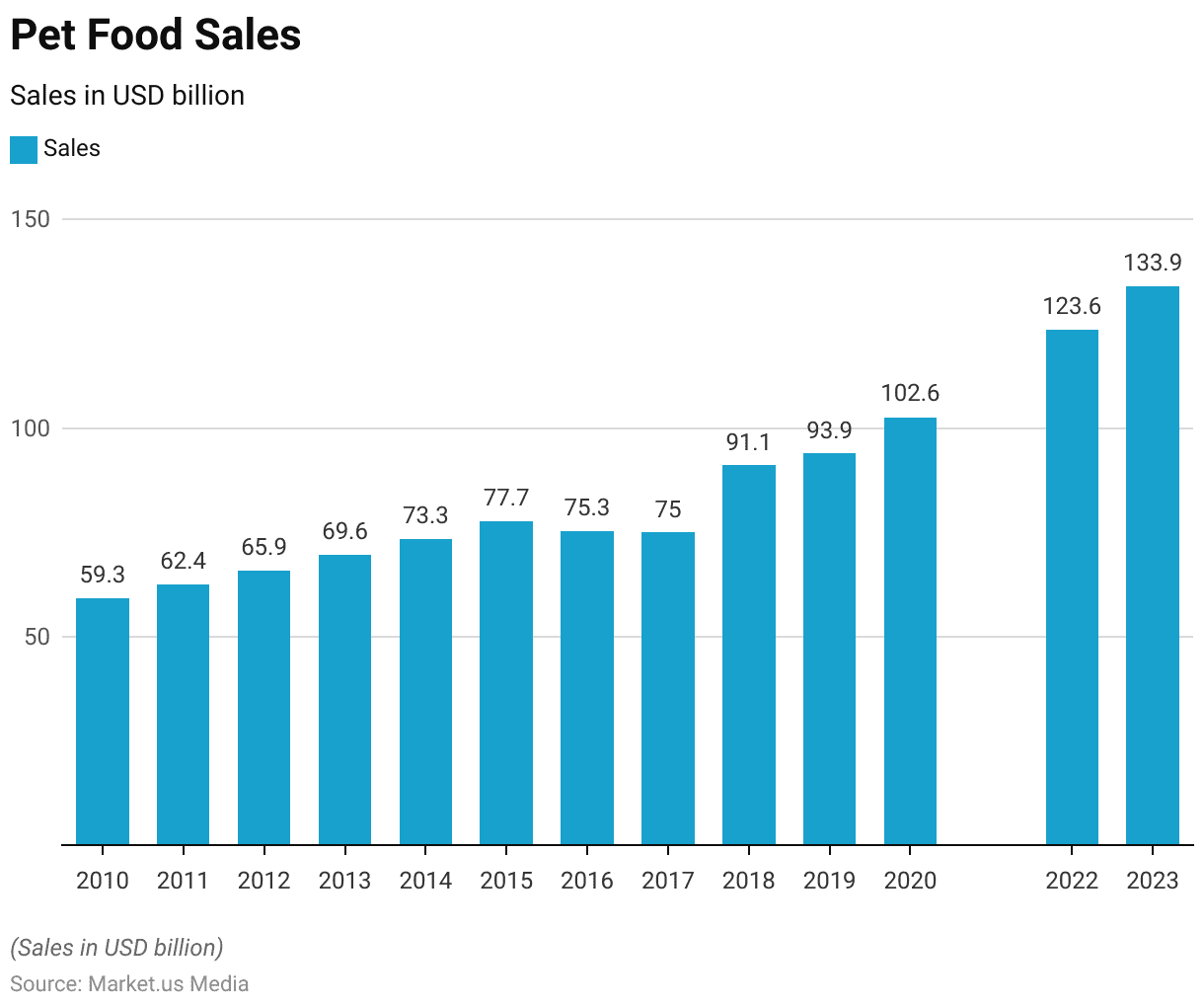
Pet Food Preferences
Feature Preferences
- The Mondi and Dow Chemical survey results reveal the preferences of respondents regarding the importance they assign to various features when choosing pet food products.
- Notably, a significant 93% of respondents prioritize a product that they believe their dog or cat will enjoy, emphasizing the importance of palatability.
- Additionally, 91% of respondents value brands they trust, indicating the role of brand reputation in their decision-making process.
- Nutritional ingredient claims hold considerable weight as well, with 78% of respondents deeming them important.
- Furthermore, 75% consider the availability of pet food in their usual shopping locations as a crucial factor, emphasizing convenience.
- Specific formulations tailored to weight, age, or breed are important to 70% of respondents, while 67% value knowing the specific ingredients included in the product.
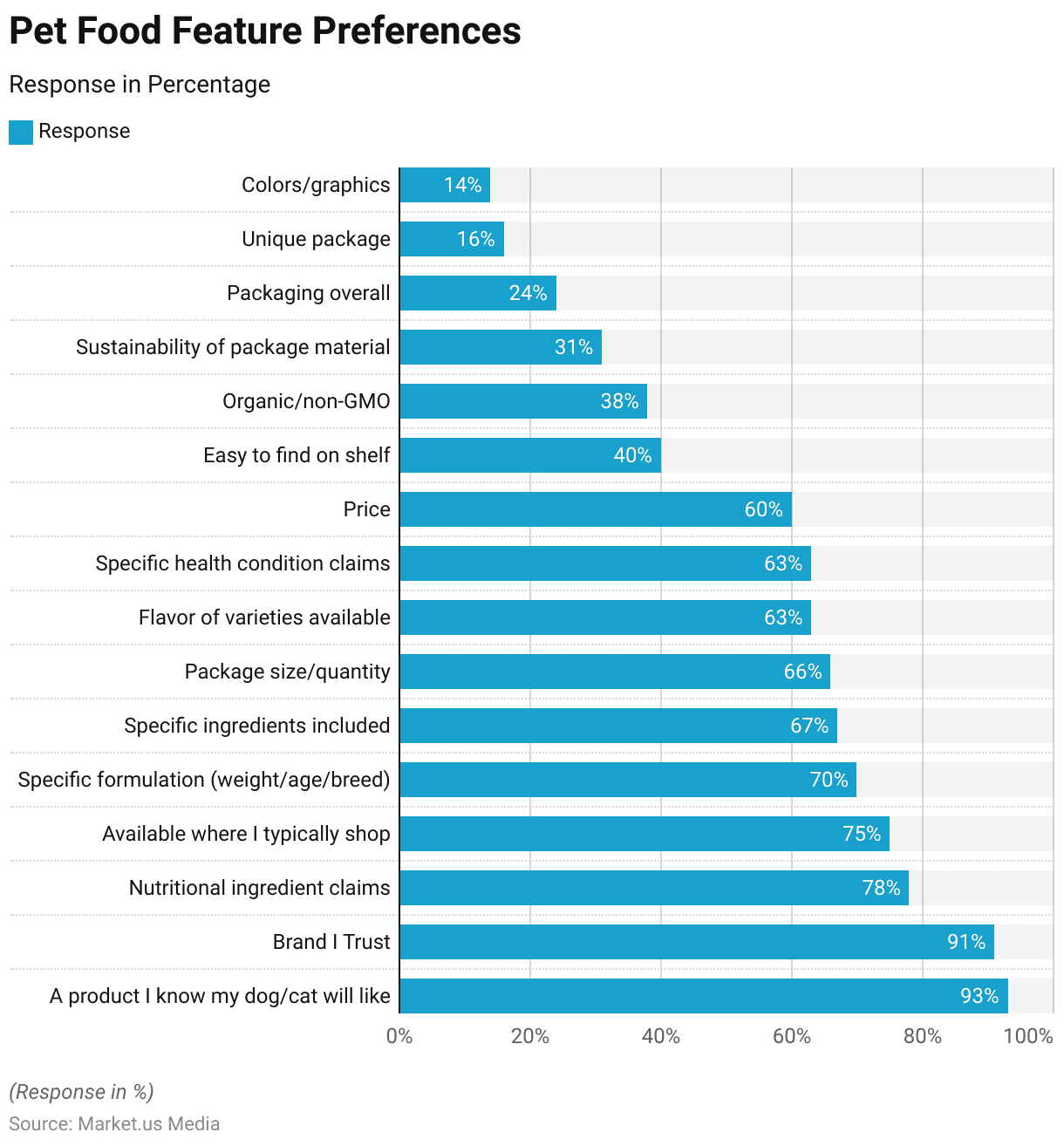
Other Preferences
- Some pet owners remain steadfast in their standards when purchasing pet products, while others are actively looking for ways to save money.
- Approximately 37% of pet owners are in search of discounts on pet items, while 28% are making use of loyalty programs to accumulate savings.
- Nevertheless, the majority of consumers are not willing to compromise on the quality of the products they buy for their pets.
- According to a report by Vericast, 78% of survey participants are open to increasing their spending on pet food and treats in the current year compared to 2022.
Latest Consumer Trends in Pet Food Industry
- A significant portion of pet owners, around 77%, are aware that cats and dogs have different dietary requirements.
- Specifically, the belief that cats are natural carnivores is widespread, with only 16.4% thinking otherwise.
- However, opinions on dogs’ dietary nature are more varied, with 45.6% considering them carnivores, 42.5% regarding them as omnivores, and a small 2.4% classifying them as herbivores.
- Interestingly, a majority of survey participants (approximately 79.9%) have not fed their dogs a vegan or plant-based diet.
Discuss your needs with our analyst
Please share your requirements with more details so our analyst can check if they can solve your problem(s)



